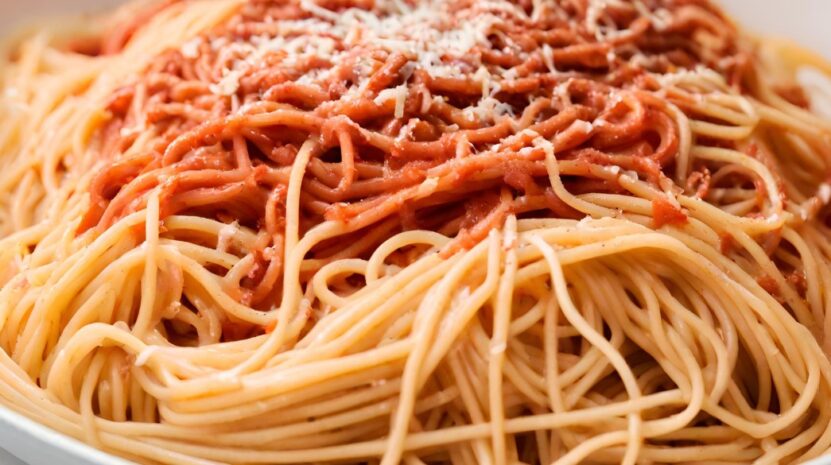Fresh Homemade: 4–5 Days
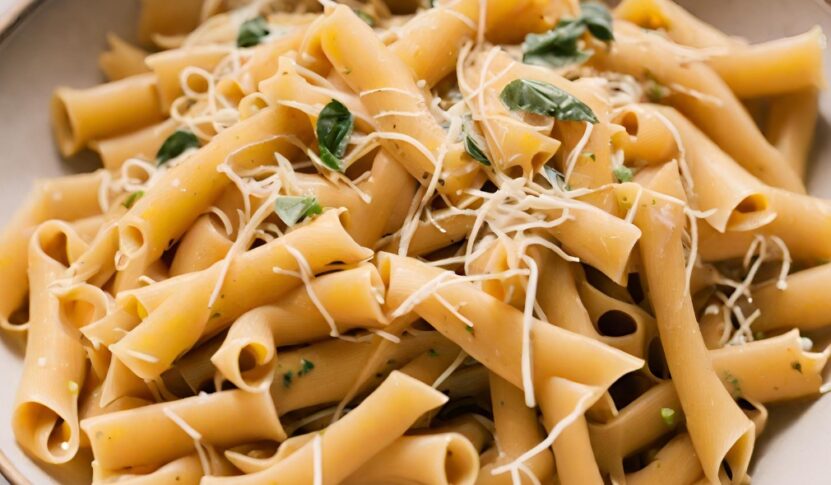
Homemade pasta brings a unique, artisanal quality to meals. When stored in the fridge, it typically lasts 4 to 5 days. The shorter shelf life compared to dried pasta is due to the moisture content and lack of preservatives. Moisture can be a breeding ground for bacteria, so it’s crucial to store homemade pasta in airtight containers to prevent exposure to air and moisture.
To extend its shelf life, ensure it is thoroughly dried before refrigeration. This can be done by laying it out on a drying rack or a clean cloth. Once dried, place it in an airtight container or wrap it tightly in cling film. Remember to label the container with the date of preparation. We can notice that other wheat products have a similar storage time, such as Ciabatta and other types of bread.
Fresh Store-Bought: 1–3 Days
Store-bought fresh option usually has a fridge life of 1 to 3 days. The difference in shelf life compared to homemade one can be attributed to the commercial preparation process. Although it may contain some preservatives, store-bought fresh product is still susceptible to spoilage due to its high moisture content.
To maximize its shelf life, keep it in its original packaging until you’re ready to use it. Once opened, transfer any unused pasta to an airtight container. If the pasta comes in a vacuum-sealed package, only open it when you’re ready to cook to maintain its freshness.
Cooked Wheat: 3–5 Days
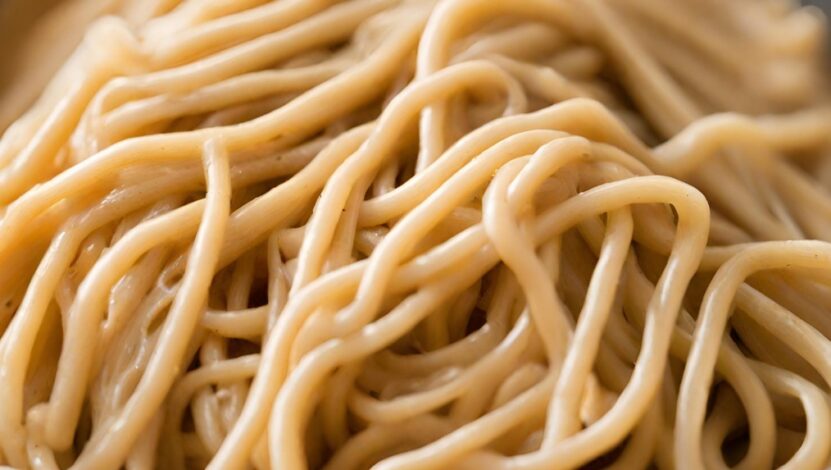
Cooked wheat spaghetti, when stored properly, can last in the fridge for 3 to 5 days. The key to prolonging its shelf life is rapid cooling and airtight storage. After cooking, rinse it under cold water to stop the cooking process and remove excess starch.
Then, toss it with a small amount of oil to prevent sticking. Store the cooled spaghetti in airtight containers or resealable bags. This not only prevents contamination but also maintains the pasta’s texture. If you have cooked it with sauce, it’s advisable to store the sauce separately to maintain the texture.
Alternative Varieties: 3–5 Days
Lentil-, bean-, or pea-based, and gluten-free varieties, have become popular alternatives to traditional wheat. Their fridge life is similar, about 3 to 5 days. These options often have different textures and moisture contents compared to wheat pasta, which can influence their storage. Store these pastas in the fridge using the same methods as for wheat pasta: rapid cooling, airtight containers, and separation from sauces.
Keep in mind that some alternative pastas may become softer or harder in the fridge, so they might require a shorter storage time for optimal texture. Look out for the same signs of spoilage: sliminess, off-odors, and discoloration. Given the unique ingredients in these pastas, they might exhibit spoilage signs differently, so it’s crucial to be vigilant.
Stuffed: 3–5 Days
Stuffed options like tortellini or ravioli are delightful but have specific storage needs due to their fillings. They can be kept in the fridge for 3 to 5 days. The fillings, which can range from cheese to meat, may spoil faster than the pasta itself, so it’s important to pay close attention to storage. After cooking, cool the stuffed pasta quickly and store it in airtight containers.
If the pasta is filled with perishable ingredients like meat or fresh cheese, consider consuming it sooner rather than later to ensure freshness and safety.
Lasagna and Pasta with Sauce: 5 Days
Lasagna and other dishes with sauce can be safely stored in the fridge for up to 5 days. The sauce can act as a barrier, somewhat protecting it from air exposure, but it also adds moisture, which can accelerate spoilage. When storing dishes like lasagna, cover them tightly with foil or store in airtight containers to maintain quality. If you’re storing pasta with sauce separately, consider storing the sauce in a separate container to prevent it from becoming too soft.
Spoilage signs in these dishes can be more challenging to detect due to the sauce. Look for any off-smells, a change in the texture of the pasta, or any visible mold on the sauce or pasta. It’s especially important to be cautious with dishes containing meat sauces, as they can spoil quicker.
Signs of Spoilage
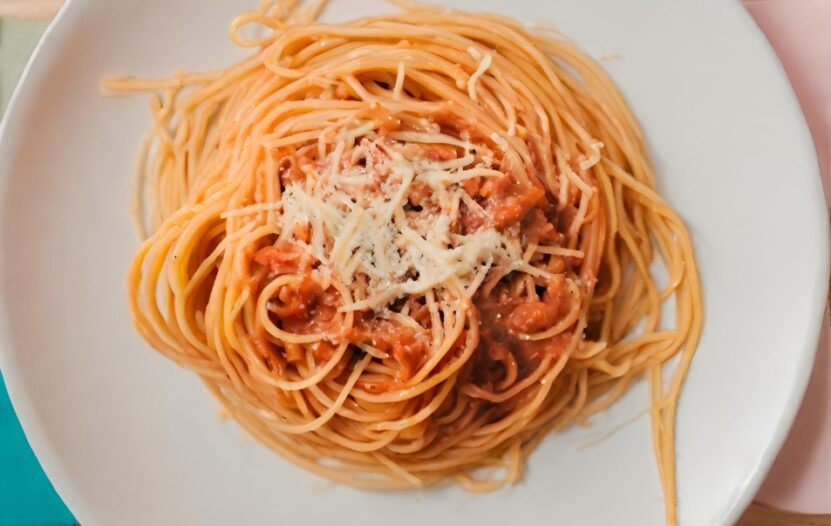
Identifying spoilage is crucial for food safety. The common signs include a slimy texture, mold growth, dullness, or discoloration. Any off-odors or sour tastes are also indicators of spoilage.
It’s essential to inspect the pasta carefully before consuming, especially if it has been stored for a few days. Mold growth, in particular, is a clear sign that it should not be consumed. Even if only part of the pasta shows mold, it’s best to discard the entire portion as mold spores can spread invisibly.
Safe Storage and Reheating Practices
Proper storage and reheating are key to preserving its quality and safety. It should be refrigerated within 2 hours of cooking. Use airtight containers or resealable bags, and keep your refrigerator at 40°F (4°C) or lower.
When reheating one with sauce, adding a little water or sauce can help to maintain its moisture and prevent it from drying out. Avoid reheating pasta multiple times as this can degrade its quality and increase the risk of foodborne illness.
How to Determine the Right Amount of Pasta?
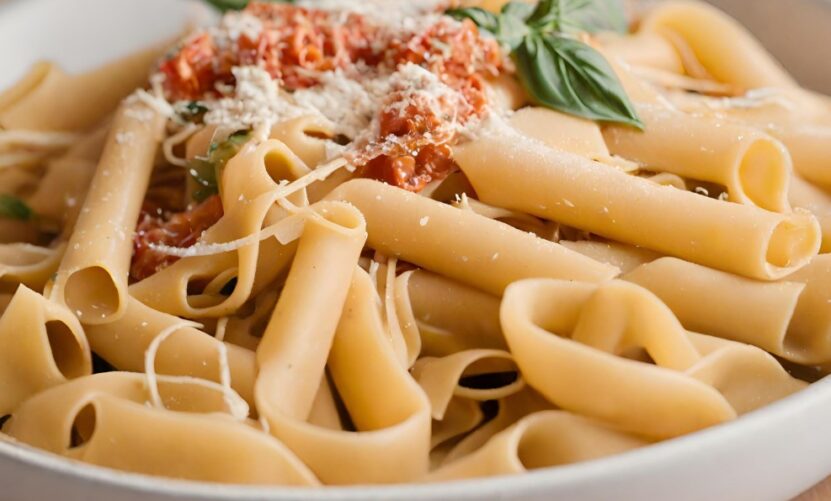
Figuring out the perfect amount of pasta to cook can be a bit of a puzzle, especially if you’re aiming for portion control or feeding a group. Cooking too little leaves you hungry, while too much might mean dealing with leftovers.
The first step is to get familiar with standard pasta serving sizes. For dried pasta, a single serving is typically about 2 ounces (57 grams). For fresh pasta, since it’s denser, a serving is about 4 ounces (113 grams). However, these are just guidelines. Appetite and the type of meal (light or hearty) can influence the actual serving size.
Use Measuring Tools
Measuring tools can be your best friends in determining pasta portions. Use a kitchen scale for the most accurate measurement. For spaghetti and long pasta, a pasta measurer, which comes with various-sized holes, can be handy. You can also use household objects; a 1-inch diameter bunch of dry spaghetti equals about one serving.
Consider the Dish Type
The type of pasta dish you’re preparing also affects the amount you need. For example, if pasta is the main course, you might want a larger serving than if it’s a side dish. Similarly, if you’re adding several ingredients like meats, vegetables, or cheeses, you can reduce the pasta quantity since these add-ons contribute to the meal’s overall volume and satiety.
Account for Appetites
People’s appetites vary. Adults typically consume larger portions than children. Also, consider the group you’re serving. If you’re cooking for athletes or teenagers, they might appreciate larger portions. Adjust your pasta quantities based on who will be eating.
Plan for Leftovers
If you love having leftovers for an easy next-day meal, intentionally cook more pasta. An extra serving or two can be a time-saver. Just remember to store leftovers properly for food safety.
When in Doubt, Cook More
It’s usually better to err on the side of cooking a bit more pasta than not enough, especially if you’re hosting guests. Extra pasta can be creatively used in salads, frittatas, or stir-fries the next day.
FAQs
Can opened spaghetti go bad?
Yes, opened spaghetti can go bad if it is not stored properly. Unopened dry pasta can last for up to two years in the pantry, but opened pasta should be used within one year.
Is it safe to eat leftover pasta?
Leftover pasta can be safe to eat if it is cooked, stored, and reheated properly. Cooked pasta should be refrigerated within two hours of cooking and eaten within three to five days. Leftover pasta should be reheated until it reaches an internal temperature of 165°F (74°C).
Is week old pasta safe?
Week old pasta is not safe to eat and should be discarded. Pasta that has been in the fridge for more than five days may have signs of spoilage such as mold, discoloration, or a bad smell. Eating expired pasta can cause food poisoning symptoms such as nausea, vomiting, and diarrhea.
Can you eat 3 day old spaghetti bolognese?
You can eat 3 day old spaghetti bolognese if it has been stored and reheated properly. Spaghetti bolognese should be refrigerated in an airtight container within two hours of cooking and eaten within five days. Spaghetti bolognese should be reheated until it reaches an internal temperature of 165°F (74°C).
Last Words
Pasta offers a wonderful variety to any dining table, and knowing how to store and when to discard it ensures every bite is as good as it should be. Familiarize yourself with the storage times for different pasta types, keep an eye out for any signs of spoilage, and practice safe reheating techniques. If ever unsure about pasta’s freshness, it’s wise to choose safety and dispose of it.
